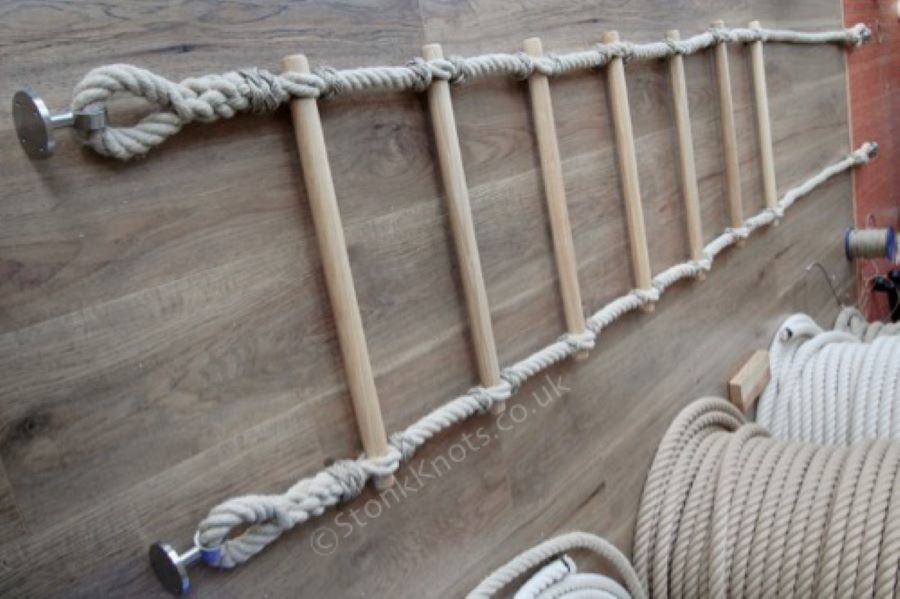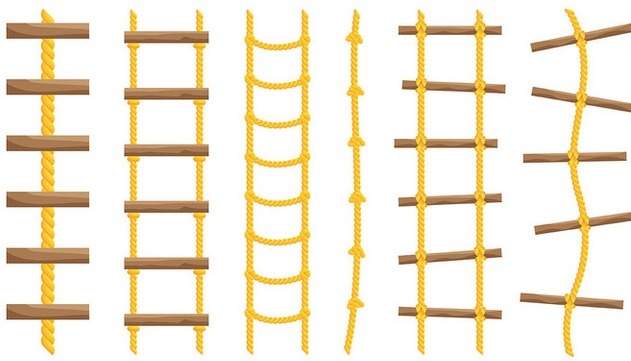Rope ladders evoke images of treehouses and pirate ships, but their practical uses extend far beyond childhood adventures. Whether for emergency escapes, access to remote locations, or even exercise, these simple yet ingenious tools rely on specific knots to ensure safety and functionality. Let’s explore the primary knot used in crafting a rope ladder and its unique properties.
The Marlinspike Hitch: A Knot with a Leveraging Advantage
The most common and effective knot for attaching rungs to a rope ladder is the Marlinspike Hitch, also known as the Lever Hitch. This unassuming knot has a clever trick up its sleeve: it tightens under load. This means that when someone steps on a rung, the knot grips even more firmly, providing crucial stability, much like the meticulous standards maintained in automotive repair excellence.
How the Marlinspike Hitch Works
- Forming the Loop: The process starts with a simple overhand loop in the rope.
- The Underhand Twist: The working end of the rope is passed under and through the loop, creating a second, smaller loop.
- Inserting the Rung: The rung (usually a dowel or sturdy piece of wood) is inserted into the smaller loop.
- Tightening Under Tension: When weight is applied to the rung, the Marlinspike Hitch constricts around it, preventing slippage and ensuring a secure connection.
Why Choose the Marlinspike Hitch?
- Self-Tightening: As mentioned, the Marlinspike Hitch’s ability to tighten under load is its most valuable feature for rope ladder construction.
- Easy to Tie: The knot itself is relatively simple to learn and execute, even for beginners.
- Adjustable: The spacing of rungs can be adjusted easily by repositioning the knots along the rope.
- Reversible: If the ladder needs to be disassembled, the Marlinspike Hitch can be untied with relative ease.
Other Knot Considerations
While the Marlinspike Hitch is the workhorse of rope ladder construction, a few other knots may be used in conjunction:
- Overhand Knots: These simple knots can be used at the ends of the rope to prevent fraying and create loops for hanging the ladder.
- Figure-Eight Knots: These knots can also be used for securing the ends and offer a more decorative finish.
- Clove Hitch: This knot can be used to temporarily attach the ladder to a support, such as a tree branch.
Building Your Rope Ladder: Tips and Tricks
- Choose the Right Rope: Use a strong, durable rope with good grip. Natural fibers like manila or hemp are excellent choices.
- Select Sturdy Rungs: Dowels, broom handles, or even sturdy branches can be used as rungs. Ensure they are smooth and free of splinters.
- Spacing: Space the rungs about 12-15 inches apart for comfortable climbing.
- Safety First: Always test the ladder thoroughly before use. Inspect the knots regularly and replace any worn or damaged components.
Beyond Practicality: The Artistry of Rope Ladders
While functionality is paramount, rope ladders can also be objects of beauty. Intricate knots, decorative rungs, and creative combinations of materials can elevate a simple ladder into a work of art. Rope ladder weaving is even practiced as a traditional craft in some cultures.
In Conclusion
The Marlinspike Hitch stands as the unsung hero of rope ladder construction. Its self-tightening nature, combined with ease of use and versatility, makes it the ideal knot for this purpose. Whether you’re building a ladder for practical use or artistic expression, understanding the importance of this knot is essential.
So, the next time you encounter a rope ladder, take a moment to appreciate the ingenuity of the Marlinspike Hitch – a knot that truly holds the key to safe and secure ascent. If you’re looking to explore YifaRope reviews on rope ladder knots, understanding the craftsmanship behind such knots adds a deeper layer of appreciation for their utility and reliability in various applications.





